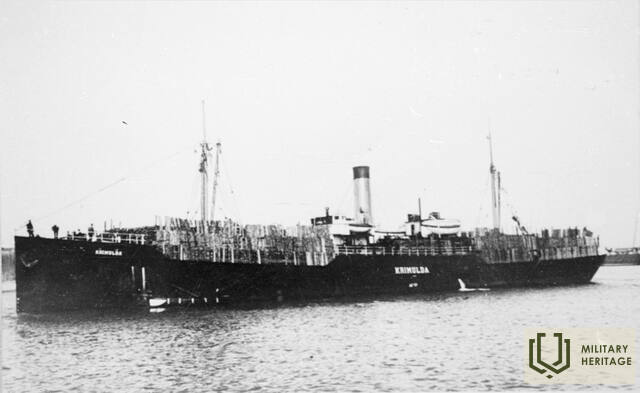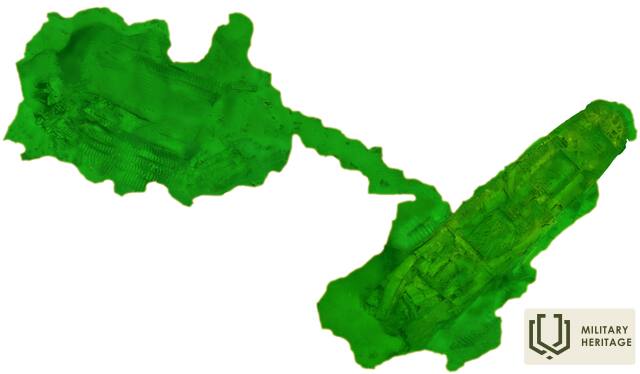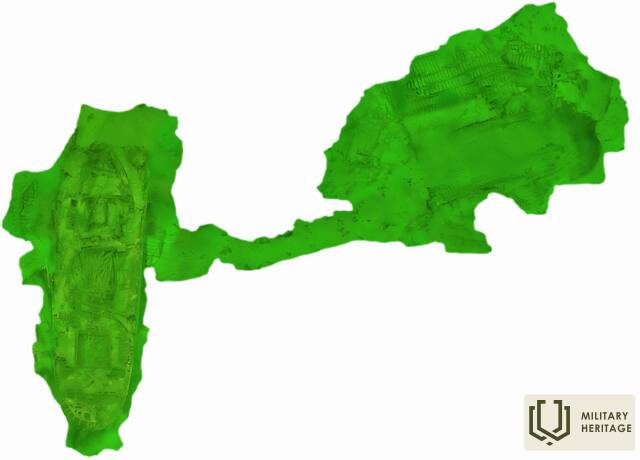Cargo steamer Krimulda Military equipment


Built in 1899 in Blyth, England. The ship's dimensions: 83.82 x 12.192 5.52 meters. One deck, two masts.
Originally named Somerford, owned by Speeding & Marshall SS Co. Since 1910, the name General Dragomirov and the owner "Gebrüder Seeberg" in Riga.
During the First World War, on December 3, 1915, the ship was taken into the service of the Baltic Fleet. From October 25, 1917, was in the possession of the Bolsheviks. 1918 name Komissar (shipping company "Transbalt"). From 1920 the name Krimulda and according to the peace treaty was returned to the former owner "Gebrüder Seeberg" on December 17, 1920.
The events of the Second World War and political changes brought tragic consequences to the maritime shipping of the Baltic States, which affected the fate of both the ships and the people working in the maritime sector.
On June 9, 1940, the commander of the Soviet Navy's Baltic Fleet, Vice-Admiral Vladimir Tributs, was ordered to subordinate the fleet to the commander of the Leningrad Military District and to be ready to carry out the combat orders given by him. The main tasks were to seize all the sea vessels of Estonia, Latvia and Lithuania, cut off the sea connection between these countries, close the Gulf of Riga and block the coast of Estonia and Latvia in order to prevent the evacuation of the governments of these countries. On June 22, 1941, war broke out between Hitler's Germany and Stalin's Russia, which first manifested itself in the Baltic states in the form of sea and air war.
The order to evacuate the Russian forces was received on June 27. In the evening of the same day, the Baltic fleet left Ventspils heading for the Suur Strait and Pärnu, including the cargo steamer Krimulda. On June 28, the ships anchored and continued their journey only at noon on June 29. On June 30, the ships were at anchor again. On the evening of July 1, the captain received an order to go to Leningrad.
On July 1, after crossing the strait, Krimulda hit a mine near Vormsi and sank. Five sailors lost their lives. The rest of the team got on the two lifeboats and headed towards the Vorms lighthouse, the motorboat coming from the shore towed the escaped sailors to Rohuküla.
Krimulda was hit near the bow mast and the bow separated from the hull. Therefore, the bow is quite crushed and the stern is relatively well preserved. The Krimulda wreck lies at a depth of 16 meters. The bow details are located approximately 25 meters east of the north-south facing stern. The stern lies on the keel, the spare propellera and winches for cargo loading can be seen on the deck and plenty of timber in the holds.
Used sources and references:
Eesti ajalugu VI. 2005. Ilmamaa.
Miklāvs 1991. Tvaikoņa „Krimulda“ bojāeja - Maija Frīdberga. Latvijas jūrniecības gadagrāmata ´91. Riga, 64-67.







